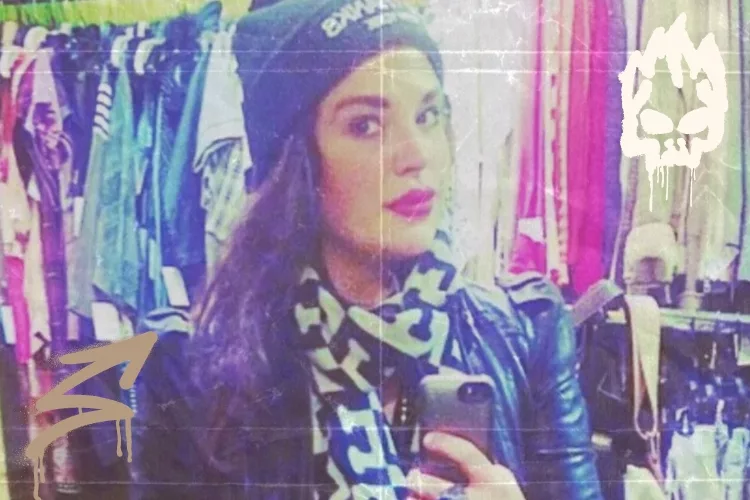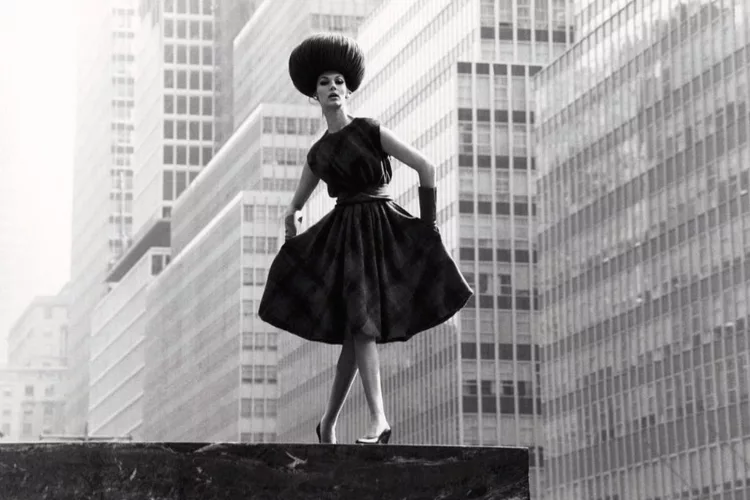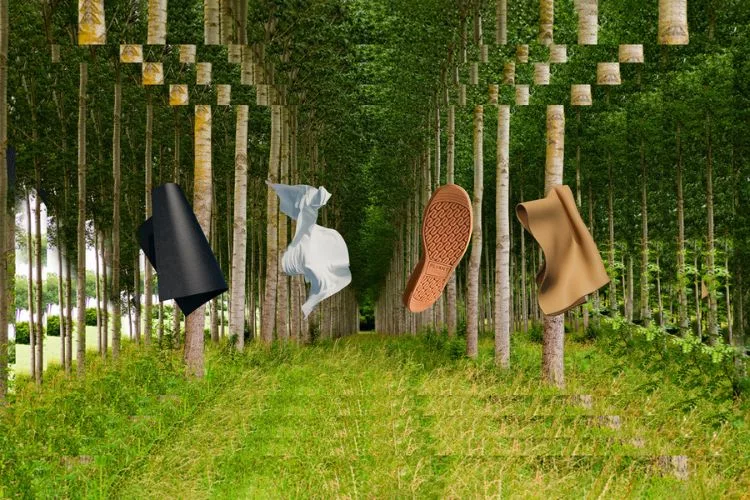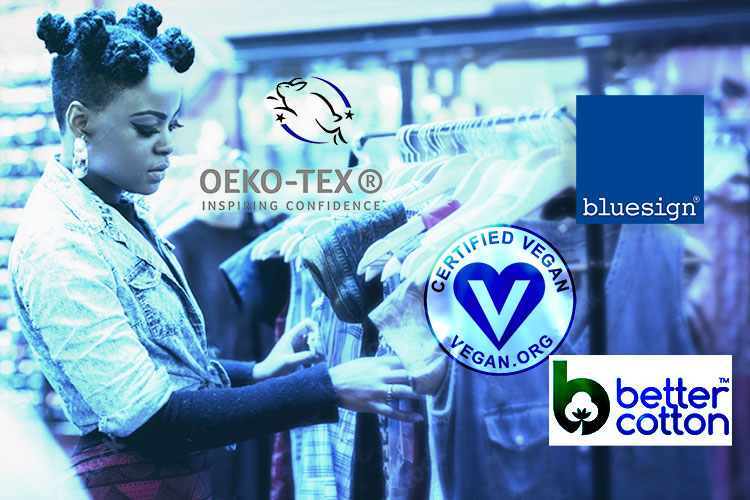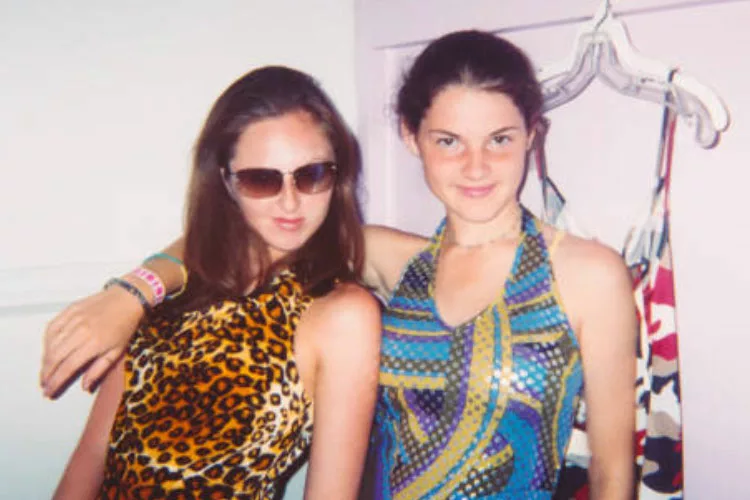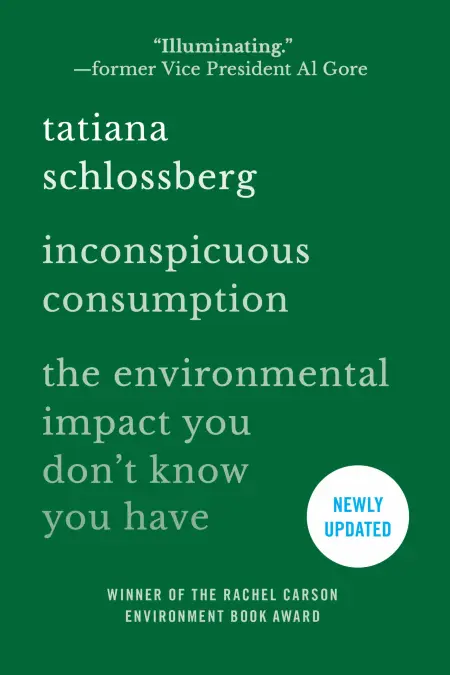
In Inconspicuous Consumption: The Environmental Impact You Don’t Know You Have, Tatiana Schlossberg examines the hidden impacts that our fashion has on the environment. She writes about cashmere, blue jeans, active-wear and, our least favorite, fast fashion. Her book outlines steps to change consumption habits –empowering us to act positively.
Schlossberg also examines three other areas—the internet and technology, food, and fuel—to show us more environmental and social impacts we’d probably be oblivious to otherwise. This may feel like it’s in the weeds, yet she writes as if you were sitting down and having a conversation about how it all works. And while none of this is easy stuff, there is hope in all of this as well.
The book is full of information you normally wouldn’t think of when you think “fashion”. From the Mongolian dynasty’s history of cashmere to the desertification of their grasslands today, to the devastation of communities exposed to the most toxic aspects of climate change, she calls out injustice and names it. While you learn fashion’s secrets, you’ll gain insight from scientists, hydrologists, and of course, environmental journalist Tatiana Schlossberg herself.
She’s down to earth, funny, and highly personal. If you can, snag the book at your local bookstore or library so you can explore and annotate as you please! You can also check out TatianaSchlossberg.com for podcast and articles all about the environment and climate.
For now, we’ll share our 5 takeaways from the Fashion section of this must-read book.
We don’t have to accept fashion’s bad vibes
Vanity, necessity, and lack of transparency can leave us complacent about fashion’s negative side.
“These things combine to make us more willing to accept things we know can’t be great for the planet, if we take a bit longer to think about it.” Schlossberg states. Noticing why we tolerate certain things can help us take control over what we choose to accept.
The thing is, it’s human to care about what other’s think –even if we wish that weren’t true. And brands know this. They’ll use that to entice you into buying that new top.
Schlossberg urges us to double-check that our purchases are for good reason & not just for vanity. She also talks about how sometimes we feel this complacency with fashion. Basically, she warns us not to get comfy with fashion’s “business as usual”, so we don’t keep investing into hidden activities such as greenwashed advertisement.
Shopping “Fast Fashion” isn’t about the size of your bank account.
“I once worked as an assistant for a personal shopper for really rich women whose motto was “mix high with low – you can’t lose” so recalls my editor-in-chief. This way, said the personal shopper she could buy for her clients so. Much. MORE!
The ultra-fast fashion brands in particular love doing things to maximize profits and get us the lowest prices possible. Without shady production practices, fast fashion just wouldn’t exist. Schlossberg unravels how this works so we can think critically about how the fashion market functions at high speed. With specific events and timelines, a clear picture of the evolution of our own consumer behavior with the rise of fast fashion emerges.
A more nuanced conversation concerns how the focus of fast fashion is really on producing and selling. Labels have to make sure they not only get the attention of their shoppers but keep it. That means finding pockets of people who can afford to keep coming back.
An argument against sustainable fashion is that “the price is too high”. But Schlossberg asserts that the fast-fashion industry isn’t really looking to attract the less fortunate people who can’t afford to re-buy or even buy in the first place. They’re looking at people who want to be on trend, who can afford to wear something once or twice and toss it in the back of the closet. Rinse and repeat.
Fashion involves everyone, everything.
To positively reform the fashion industry, we need to engage all levels of society. What does that mean? From designers and governments, to individuals – we can all take actions that are more sustainable. It’s necessary to include everyone in planning and deciding what’s next for fashion so that the whole system can be addressed rather than its individual parts.
For synthetic fibers in particular, designers can avoid them all together and focus on materials that are either biodegradable or recyclable with current technology. “It’s not the fault of the consumer that [insert fashion item here] is cheap,” says Schlossberg. Corporations should be making sure they’re being responsible for the choices they make; for example, they should be paying for any down-stream (or external) impacts of their production, from the toxic river to the polluted air, to the overflowing landfill. Government’s role is to make sure they actually do that.
Brands overestimate their Green initiatives
This gets into the difficulties of “recycling”– that the technology isn’t really that efficient yet, and that clothing labels usually produce way more than they take back with their recycling initiatives. So, we should be wary of the claims companies make before we purchase.
Rather than restocking the landfills with leftovers, perhaps consumers can become customers who cherish their clothing. Buy less, buy better –by looking more critically at the numbers and claims of fashion companies, greenwashing is made visible.
Imperfect efforts are better than nothing.
If learning about the complexities of the fashion industry depress you, that’s totally normal. Sometimes we have to just do what we can. You’ll see that Schlossberg understands this too as she writes from her own experience trying to do the right thing. When told to hang dry her clothing instead of using a dryer so often, her response was “Okay, but I live in New York. I’ll do what I can.”
Even the brands themselves have a hard time trying to get things right, but there are many that are trying. We have a whole list, actually! We should acknowledge the challenges of the industry and approach them head on rather than just accepting things as they are. Inconspicuous Consumption: The Environmental Impact You Don’t Know You Have offers a compelling roadmap.
–Destiny Washington
Related Articles
5 Takeaways from The World is on Fire But We’re Still Buying Shoes
Wear What You Already Own – How to Make it Easy
Influencers need to stop Fast Fashion Hauls


